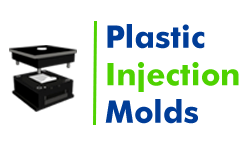- Mould Manufacturer
- Tooling
- Moulding Die
- Plastic Molding
- Plastic Injection Molding
- Injection Molding
- Nylon Injection Molding
- Injection Moulding
- Custom Injection Molding
- Injection Mould
- Injection Mouldings Process Manufacturers
- Medical Injection Molding
- Polycarbonate Injection Moulding
- Rapid Injection Moulding
- Injection Molds
- Injection Molding Cost
- Injection Molding Suppliers
- Injection Moldings
- HDPE Molding
- Metal Injection Molding
- Rubber Injection Molding
- Mold Designing
- Prototyping
- Automotive Injection Molding
- Blow Molding
- 3D Printing
Analyzing the Various Aspects of printing sla Technology
The manufacturing industry is keeping up with technological progress to enhance productivity. Hence, it is not surprising that the printing sla process has become an integral part of the manufacturing process. Stereolithography or SLA is the process of additive manufacturing, and it belongs to the Vat Photopolymerization family.
More about sla sls slm
Before discussing the various technologies, it is necessary to know about the basic variations of the technology.
- In this technique, you will be creating an object through selective curing of a polymer resin in layers, using the ultraviolet laser beam.
- It is different from sls 3d printing, the fastest additive manufacturing technology to make them durable, functional, and accurate prototypes and the end-user parts.
- The process is also different from the slm 3d printing, which is the additive manufacturing technology only for the metal powders. Using the selective laser melting machine, you can use the technology to form the metal parts with the desired density directly.
SLS applications
It is essential to build durable parts, especially when you are planning to produce sophisticated medical devices. The sls 3d printing service is apt for the purpose as it helps to impart the fantastic mechanical properties of the device even in the prototype. Thus, you will find its vast application in designing and manufacturing anatomical models and medical devices. The sls printing service has turned out to be the masterstroke of the manufacturers.
High productivity with sls metal printing
SLS printing is undoubtedly the fastest additive manufacturing technique presently. It assures the production of durable prototypes as the key to the perfection of sls metal printing lies in the use of nylon for laser sintering. Nylon and its composites are ideal materials to serve as engineering thermoplastic for both functional prototyping and production of end-user products.
When it comes to durability and complex assemblies, non can beat the integrity and strength of nylon. Its high environmental stability is appreciable. You should also emphasize stl printing service as the STL files are light and simple. Any machine or software can handle these files conveniently. You can email the file format and download and transfer it because it will contain only the basic shape of the proposed surfaces.
Printer parameters
One of the chief factors to consider for employing the sla 3d printing service is the print parameters that you can fix according to your requirements. The only inputs are:
- Layer height: The typical layer height usually lies between 25 and 100 microns. The height of the lower layer will capture the accurate geometries but will add to the build time and cost. The probability of a failed print will increase too. The most common layer height for maximum applications in sla stereolithography is around 100 microns.
- Part orientation: For most printers, the bottom-up orientation is the appropriate one. The top-down format is mainly for the industrial sla printing service. Bottom-up SLA printers will help in easier manufacturing as the operation is convenient. But as the build size has limitations, the application of force during the peeling step can cause the failure of the print.
Quick turnaround time
Most of the popular manufacturing companies are enjoying the fast turnaround time with the application of the sla sls technology. It is possible to manufacture the prototypes with maximum precision within a very short time, which aids in client pitching. Also, it will help to accelerate the bulk production of the end-user parts.
Cost-effective procedure
One of the chief concerns of every manufacturing company is the cost of manufacturing. The sla printing cost will be lower than what you expect. So, it will always maximize the profit margin of the company.
FAQ
- Q1. Which Is Better: FDM Or SLS?
Depending on particular requirements, one may choose between Fused Deposition Modeling (FDM) and Selective Laser Sintering (SLS). While SLS offers higher detail and material diversity, making it suited for complicated parts and functioning prototypes, FDM is more cost-effective for prototyping and simple designs.
- Q2. Where Is SLS 3D Printing Used?
SLS 3D printing, or Selective Laser Sintering, is used in various industries like aerospace, automotive, and healthcare. It's valued for producing complex, functional prototypes, parts, and even end-use products with high accuracy and durability from materials like nylon, polystyrene, and metal powders.
- Q3. What Colors Are SLS Print?
SLS prints are typically white or off-white in color. This is because Sodium Lauryl Sulfate (SLS) is commonly used as a material for 3D printing, and it naturally appears in this hue when printed.
- Q4. Is SLS 3D Printing Waterproof?
SLS (Selective Laser Sintering) 3D printing produces objects that are typically not waterproof due to the porous nature of the printed material. Additional post-processing steps such as sealing or coating may be required to achieve waterproofing for certain applications.







.webp)

